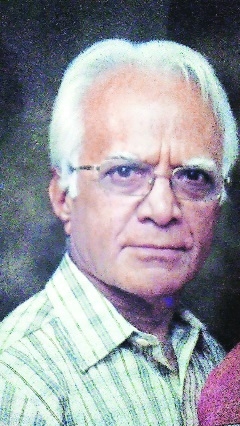‘Guru-Shishya parampara goes beyond just teaching an art form’
| Date :21-Jul-2024 |

Madan Pande
By Vaishnavi Pillay :
On Guru Pournima, the very essence of Guru-Shishya parampara comes alive, shimmering like a golden thread of connection that has been immersed and seasoned with art, knowledge, respect, trust, wisdom, and discipline.
The revered Kathak Guru of city Madan Pande, an artist of Jaipuri gharana and a disciple of Pt Kundan Lal Gangani of Jaipur, says that though the Guru-Shishya parampara has evolved with changing times yet the core value has remained intact.
Pande, who himself has been a devoted shishya and a dedicated Guru, says, “The role of a Guru goes beyond just teaching an art form. A Guru is also a source of morals and ethics, they identify disciples’ personality and guide them accordingly. That is the real meaning of being a Guru.”
He started giving training in the city around the year 1970 and currently, his daughters have taken over the responsibility to run his dance classes.
Pande says that Guru-Shishya parampara used to be much more immersive in the past. “I used to spend as much time as possible with my Guruji. This allowed me to learn not just Kathak, but also the way Guruji thought, felt, and expressed emotions (bhaav). Even the most ordinary things became lessons in dance.”
“It is evident that guru’s style, haav-bhaav, behaviour automatically gets picked-up by disciples after years of learning, but there should always be a space of maintaining individual identity too,” he stated.
He adds that many times when artists perform, one can see glimpses of their Guru’s style, which for a disciple is a huge compliment, a sign that they have absorbed their Guru’s teachings while still developing their own voice as an artist.
Pande explains that traditionally, Gurus on Guru Pournima and other occasions would not accept monetary offerings as guru-dakshina rather the disciples showcase their learned skills and perform the art form for the Guru.
Asking about how he celebrated Guru Pournima with his disciples, he replied that prayers are offered to Lord Nataraj and Goddess Saraswati, and disciples are told the significance of the day, reminding them of the special bond between a Guru and their Shishya.
“Just like any other skill or artform, mastering Kathak takes time, dedication, and a lot of practice. But when your heart is true towards the art, the feeling of liberation and self-expression is truly unmatched,” he expressed.
“A learner has to truly devote himself or herself to actually open fully to the art form.
A Guru quickly identifies potential and can tell if a student’s interest in the art form is genuine and long-lasting, or if it is just for a short term,” he mentions.
He adds, “Disciples question the point and perform dance routine half-heartedly. While they do not grasp it at that time, years later they realise the importance of repetitive practice as it lays the foundation for mastery. Achieving near-perfection is neccessary before moving on to next level,” he expressed.
He asserts that artists can benefit from attending workshops of different senior artists, however, he strongly advises against constantly switching Gurus when learning a classical art form like Kathak for a long term and aiming to become a seasoned artist.
Even though the Guru-Shishya parampara has adapted to modern times, Pande remains optimistic that the tradition will continue, and concludes by saying, “Today’s Shishya is tomorrow’s Guru”.n
